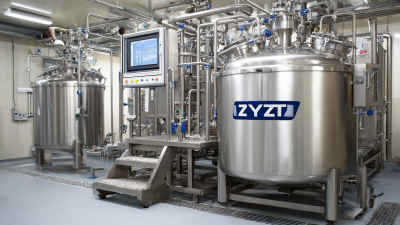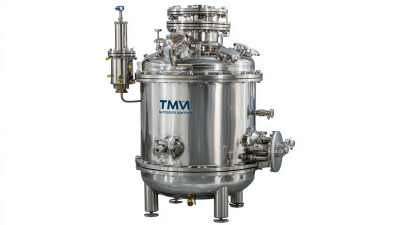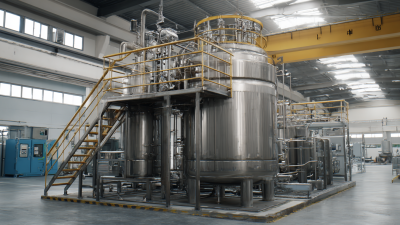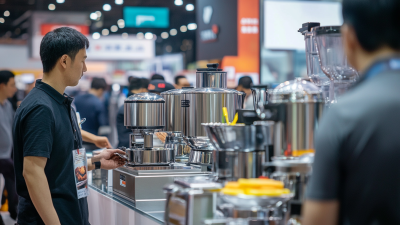
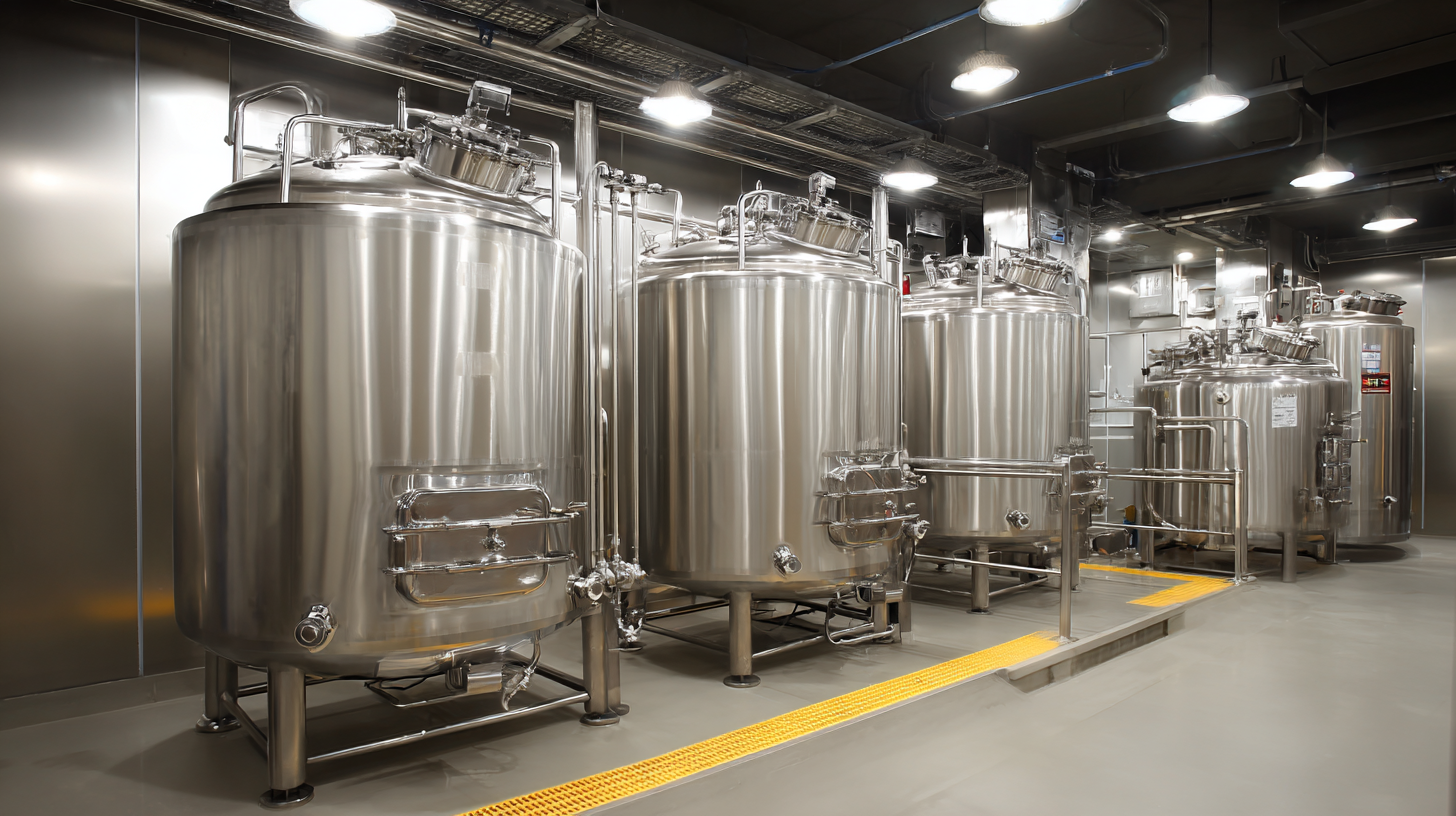 Choosing the right Stainless Steel Mixing Vessel is crucial for businesses in various industries, such as food processing, pharmaceuticals, and chemicals. According to a report by MarketsandMarkets, the global mixing vessel market is expected to reach approximately $5 billion by 2025, with stainless steel vessels being a preferred choice due to their durability and resistance to corrosion. The right mixing vessel can significantly enhance efficiency, improve product quality, and reduce contamination risks.
Choosing the right Stainless Steel Mixing Vessel is crucial for businesses in various industries, such as food processing, pharmaceuticals, and chemicals. According to a report by MarketsandMarkets, the global mixing vessel market is expected to reach approximately $5 billion by 2025, with stainless steel vessels being a preferred choice due to their durability and resistance to corrosion. The right mixing vessel can significantly enhance efficiency, improve product quality, and reduce contamination risks.
Industry experts emphasize the importance of selecting a vessel that aligns with specific operational needs, including capacity, mixing mechanism, and compliance with industry standards. This article will provide essential tips to guide you in making an informed decision about the right Stainless Steel Mixing Vessel for your business needs, ensuring both functionality and compliance are met.
When selecting a stainless steel mixing vessel for your business, several key factors must be taken into account to ensure you choose the right equipment for your specific needs. First, consider the vessel's capacity; this will largely depend on the volume of materials you typically work with. Choosing a vessel that is too small may hinder production efficiency, while one that is too large can lead to unnecessary material waste and higher operational costs.
Another critical factor is the design and construction of the mixing vessel. Look for features such as adjustable mixing speeds and customizable agitator designs that can accommodate varying product viscosities. Additionally, the quality of stainless steel used is essential, as different grades offer varying levels of corrosion resistance and durability. Ensure that the vessel can handle the specific chemicals or products you will be mixing to prevent premature wear or contamination. By carefully evaluating these factors, you can select a mixing vessel that not only meets your immediate requirements but also supports long-term operational success.
When selecting the appropriate stainless steel mixing vessel for your business, it's crucial to understand the different types available in the market. Stainless steel mixing vessels are versatile and can be categorized primarily into open and closed vessels. Open vessels allow for easy access and cleaning, making them suitable for processes that require frequent ingredient additions or adjustments. However, they may not be ideal for applications that need protection from contaminants or require specific atmosphere conditions.
On the other hand, closed vessels are designed to maintain a controlled environment, which is essential for processes sensitive to temperature and contamination. These vessels often come equipped with advanced features such as pressure control, heating elements, and specialized mixing mechanisms. Additionally, consider the different grades of stainless steel, as they offer varying levels of corrosion resistance and durability, affecting the longevity and maintenance of the equipment. By understanding these distinctions, businesses can make informed decisions that align with their specific operational needs.
This chart illustrates the capacity of various types of stainless steel mixing vessels commonly used in different industries. Choosing the right vessel can significantly impact processing efficiency and product quality.
When selecting the right stainless steel mixing vessel for your business, it's crucial to assess your volume and mixing requirements accurately. According to a report by Allied Market Research, the global mixing equipment market is expected to reach $6.6 billion by 2025, highlighting the growing demand for efficient mixing solutions across various industries. The first step in this process is to evaluate the material volume you will be working with. A smaller operation may benefit from a vessel with a capacity of 100-200 liters, while larger enterprises with higher throughput needs could require vessels well over 500 liters.
Mixing requirements also play a significant role. The viscosity of the materials being mixed, along with the desired blend consistency, should determine the type of mixing mechanism you choose. For instance, high-viscosity materials may necessitate a more robust agitator system to ensure uniform mixing.
**Tips:** Consider the scalability of your chosen vessel. As your business grows, you'll want a mixing solution that can accommodate increased demand without compromising efficiency. Additionally, further research into the industry standards for sanitation and ease of cleaning can greatly impact your operational performance and compliance with safety regulations.
| Vessel Capacity (Liters) | Mixing Speed (RPM) | Power Requirement (kW) | Material Type | Ideal Use Case |
|---|---|---|---|---|
| 100 | 120 | 2.2 | 304 Stainless Steel | Small batch food processing |
| 500 | 150 | 5.5 | 316 Stainless Steel | Chemical mixing |
| 1000 | 90 | 7.5 | 304 Stainless Steel | Pharmaceuticals |
| 2000 | 80 | 15 | 316 Stainless Steel | Cosmetics |
When selecting a stainless steel mixing vessel, businesses must carefully evaluate their budget constraints while considering the long-term investment potential of such equipment. According to a report by Allied Market Research, the global stainless steel tank market is projected to reach $1.7 billion by 2025, reflecting a growing demand driven by industries such as food and beverage and pharmaceuticals. This trend underscores the importance of making a careful choice that not only aligns with immediate financial resources but also positions the business for future growth.
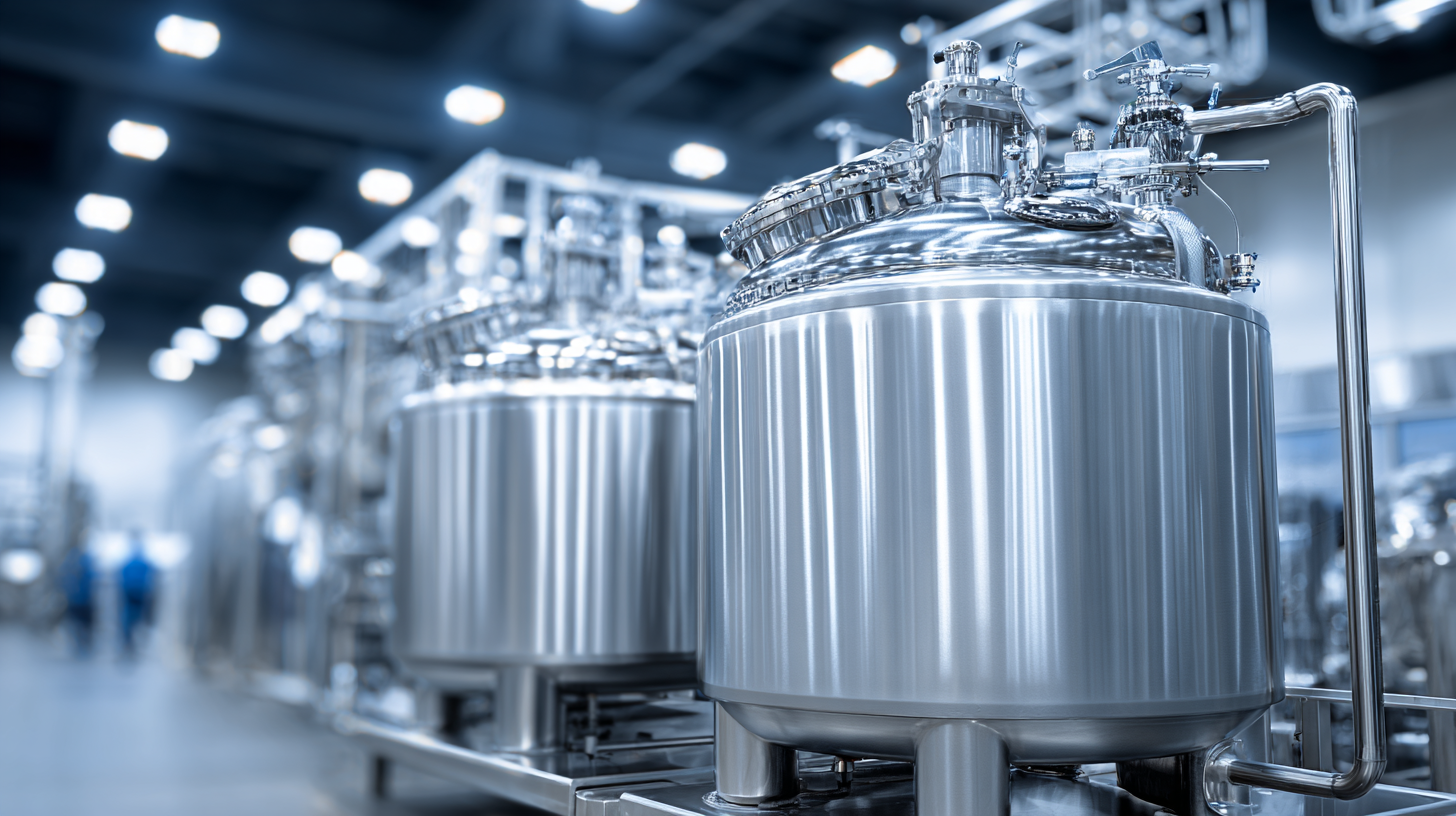
Investing in high-quality stainless steel mixing vessels often means higher upfront costs, but it's essential to look beyond initial pricing. A study by MarketsandMarkets indicates that high-grade stainless steel vessels can lead to lower maintenance costs and longer lifespans, which may ultimately result in reduced total cost of ownership (TCO) over time. Additionally, modern mixing technologies can enhance efficiency, potentially increasing productivity and output, thereby justifying the initial financial commitment. In this context, businesses should weigh their options and consider both current budget limits and the long-term financial benefits of robust, reliable equipment.
When selecting a stainless steel mixing vessel, ensuring compliance with industry standards and regulations is paramount. Start by identifying the specific standards relevant to your industry, such as FDA regulations for food processing or ASME standards for pressure vessels. Familiarize yourself with the material specifications, fabrication techniques, and safety requirements that apply to your operation. This knowledge will not only help you choose a compliant vessel but also ensure that it meets your production needs while maintaining safety and quality.
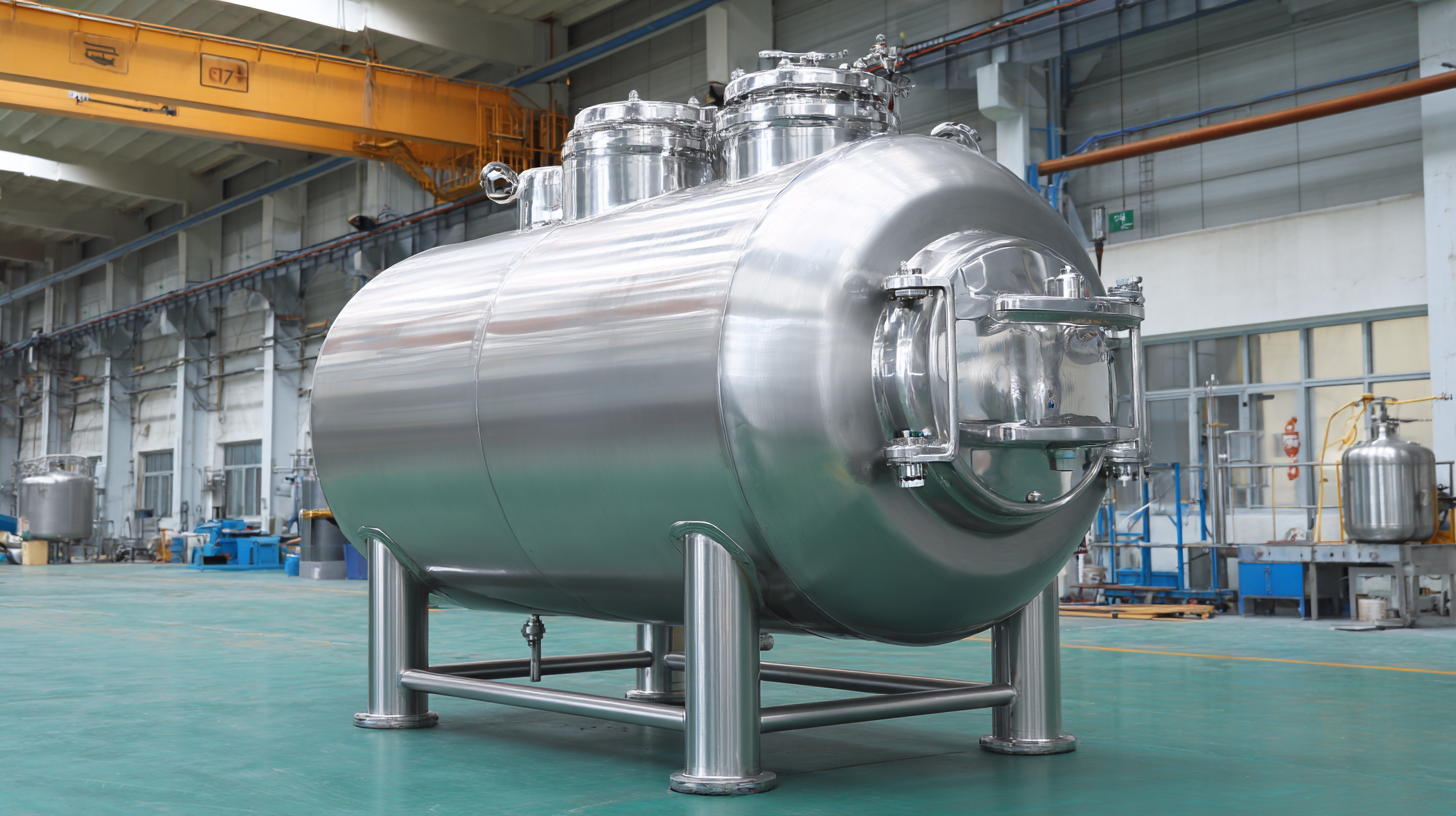
Additionally, certification is crucial when it comes to mixing vessels. Look for manufacturers that provide documentation proving their vessels comply with recognized standards. This includes certifications such as ISO 9001 for quality management or specific industry-related certifications. Regular audits and maintenance of your equipment should also be a part of your compliance strategy, ensuring your vessel continues to meet safety and operational standards over time. Implementing these practices will help mitigate risks and enhance your business's reputation in a competitive market.
